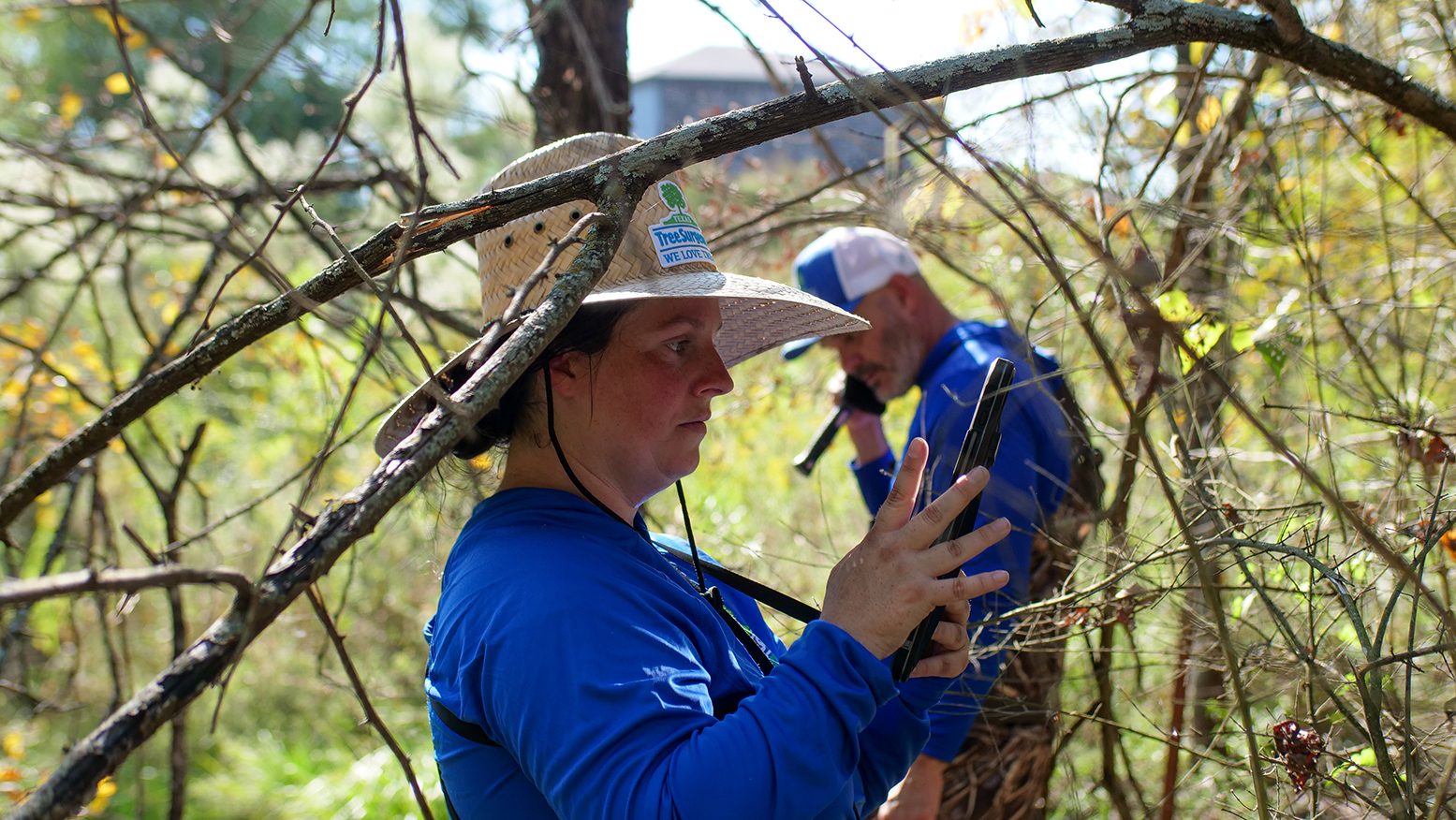Are Trees Still Showing Signs of Freeze Damage? [May 2022 UPDATE]

Unfortunately for trees in North Texas, the effects of the February 2021 winter storm, often called “Winter Storm Uri” in the media, are still with us. The historically-low temperatures and winter precipitation in 2021 and the winter weather in February 2022 had a devastating impact on the health of trees and other vegetation and recovery from those extreme conditions will take time. Common landscape trees in the DFW area, such as ash, live oaks, red oaks, wax myrtles, chinaberries, and Chinese tallow trees were some of the worst damaged by the freezing conditions and so the damage can still be seen in many parts of our community.
Different species and types of trees responded differently to the low temperatures.
Visit our previous posts for specific info:
My Tree Leafed Out in Spring 2022 but is Now Turning Brown. Is That Freeze Damage?
Due to the unprecedented nature of the winter weather in 2021 and 2022, it has been difficult to predict exactly how trees will respond and the nature and timing of any freeze-related decline.
-
Some species have seemed to bounce back from freeze damage only to show browning and die back after two or more growing seasons.
-
Red oaks and Japanese maples have been observed to leaf out in the spring as normal, only to start browning a few weeks later.
-
Unfortunately, once a tree’s canopy has completely browned or died, the tree may not be salvageable.
-
-
If a tree has partial browning or only some dead canopy:
-
Prune out the dead or dying sections
-
Use soil amendments focused on increasing available nutrients
-
High nitrogen fertilizer is NOT recommended, as this can stimulate the tree to use up energy reserves to push new growth rather than increase overall health
-
-

A tree exhibiting severe freeze-thaw cracks. Even less drastic cracking can reduce a tree’s defenses against pests.
Should I Be Worried About Cracks in the Bark of My Trees?
Freeze-thaw cracks occur when rapid temperature swings cause the wood of a tree to swell and contract faster than normal. These cracks vary in size and severity. When the water inside a tree freezes, it can damage the tree’s vascular system, which moves nutrients throughout the entire tree. Widespread damage to the vascular system can lead to tree death.
Trees with freeze-thaw cracks need special care to encourage vascular system growth and nutrient availability.
-
Proper watering is essential.
-
Soil amendments and low nitrogen fertilizers can make additional nutrients readily accessible to the tree’s roots.
-
Fertilizing stressed and damaged trees must be done with care.
-
High nitrogen growth stimulators should be avoided.
-
-
Preventive insect treatment is recommended.
-
Cracks or other wounds in the bark are entry points for borer beetles and other pests.
-
Over time, the tree will be able to seal off (“compartmentalize”) the damaged sections, but this can be a slow process.
-
Why Does My Tree Have Large Dead Branches?
In cases where only parts of a tree were subject to severe frost damage, the main trunk may be free of freeze-thaw cracks or other issues while some large or small sections of the tree show browning and dieback. With rapid temperature swings and violent winter weather, a tree’s specific location and surroundings (such as nearby structures or other trees) can have a great impact on how the tree is affected. Because of this, trees of the same species on the same block may have shown wildly different responses to freezing weather. No matter the extent, it is best to remove dead and dying sections of the canopy and bolster the tree’s health with water and nutrients to give it the best chance to compartmentalize the dead and decayed sections and return to health.
At Texas Tree Surgeons, we love trees and we love our community! Recent extreme weather events present new challenges to our urban forest and it will likely be a few years before we have seen the full effects. Trees, by their nature, respond slowly to environmental changes and, if not properly cared for, can slide into a cycle of decline following storm damage or other severe weather. As we move into the heat of the summer our current drought conditions can worsen and accelerate tree decline and dieback. Now is the time to have one of our arborists evaluate your trees for their current needs and prescribe a health care plan to increase soil nutrient levels and manage insect activity. Contact us today!
Related Blogs
Similar blogs related to this topic


Top 10 Things We'd Tell You as an Arborist if We Weren't Afraid of Hurting Your Feelings
This is a list of tree care worst practices that you, or someone you know may be guilty of. Read the following list at your own risk. You’ve been warned, feelings may get hurt. 1.…
Read more

Avoid These Tree Care Mistakes for a Healthy Landscape
Below is a list of overlooked mistakes that could jeopardize the health of your trees. From missteps in pruning to incorrect watering practices, discover how to give your trees the care they deserve. Red oak…
Read more

Why do Arborists Recommend Soil Sampling in Urban Areas like Dallas?
Soil sampling is a crucial practice in urban areas like Dallas. It helps arborists make informed decisions about your landscape to ensure a healthy urban ecosystem. Our native soils vary widely—from the dense clays of…
Read more
